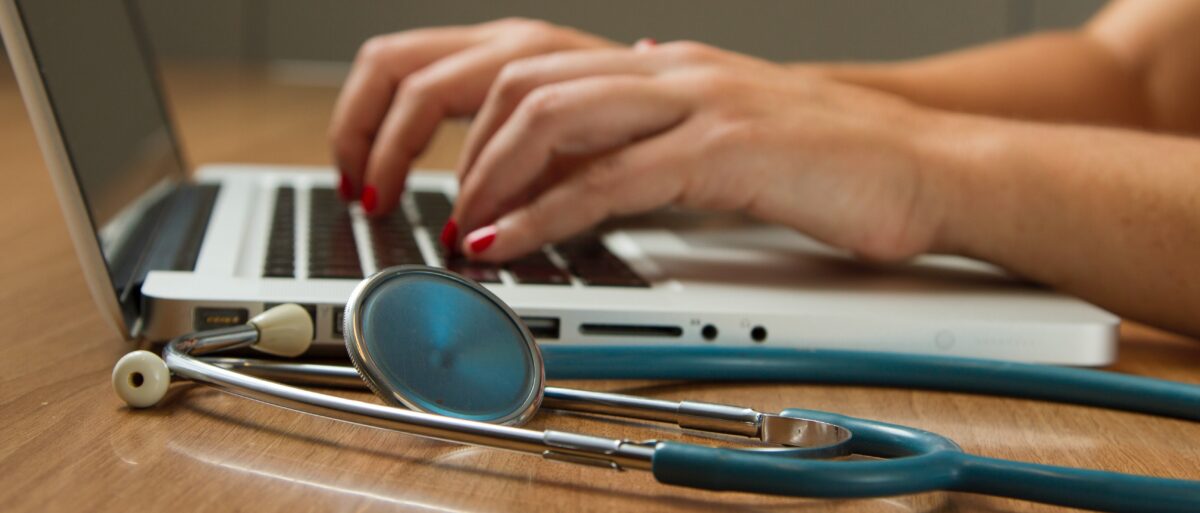After being neglected for quite some time mental health is now slowly starting the receive the attention it needs. A study conducted in 2013 found that 1.7% of the Dutch population suffers from some kind of severe mental illness (Delespaul & consensusgroep EPA, 2013). Assuming that this percentage stayed more or less the same, it means that today more than 295,000 people in The Netherlands alone have to deal with these types of issues. The ongoing pandemic of the Coronavirus is not having a positive effect on this number. There are already signs of increased demand for mental healthcare, this in combination with the precaution measurements practitioners have to take, makes it difficult to provide correct care to those who urgently need it (van Tilburg, 2020). Online health treatment can be an option to temper this worrisome development and treat more people. This article examines what ehealth is, the related benefits but also the cons and risks of it.
The term ehealth is a relatively new concept and is already starting to become a buzzword. Not so strange given the fact that it can be applied in a lot of different health (care) situations. This is precisely what makes it hard to provide one clear definition of ehealth. In the most general form, ehealth is everything where information and communication technologies are being used for health (What is eHealth?, n.d.). Every digital and online interaction a client has and is about something health-related can be considered a form of ehealth.
A big advantage of ehealth is it being digital and online. Especially during the ongoing pandemic, this comes in handy. Some packages allow online interactions between mental healthcare professionals and their clients. Functionalities like video consults or chatboxes make it unnecessary to have physical appointments. Making the use of online treatment time-efficient. Most ehealth packages include modules where a client can go through when it suits them best. Those modules can also be used in addition to “regular” offline treatment. The number of available modules keeps growing. This displays how flexible ehealth can be and how it can be customized for each individual client. For clients themselves, ehealth software can be a tool providing them with additional and better insight into their health situation. It allows them to share important information with those who need it, preventing them from telling every story over and over again. This is also a benefit for the professionals, they can share client information an retrieve information when needed, reducing the time needed for administrative tasks. All above factors together have one important overall benefit, they make it possible for one professional to treat and take care of more patients.
The before mentioned benefits do not come without any risks. Mental health professionals indicated that they have some concerns using online treatment. The most frequently noted concern relates to the confidentiality of client information (Wells, Mitchell, Finkelhor, & Becker-Blease, 2007). This sounds like a valid concern. You do not want this type of personal information accessible to persons not involved in your treatment. Since it is very hard for a professional or a client to judge the safety of their data, it is a good development that more and more laws regarding data protection are being introduced. A good example of such a law is The General Data Protection Regulation, providing guidelines on how to deal with personal data. Companies designing software healthcare or other application using personal information now have to comply with these rules, ensuring some level of data safety.
Another potential risk of using ehealth is that some important aspects cannot, or will not be noticed. In some types of treatments, situational and environmental signals are important. Think of facial expressions that might disclose information hard to capture with online tools. Ehealth tools allow a client to work on their treatment from home. For some clients, this can be a problem. Maybe their environment does not feel like a safe place, resulting in less honest answers. When vital clues are missed, there is an increased risk of incorrect treatment. It is really up to the professionals to verify for each specific case if online treatment is suitable.
To sum up, ehealh has the potential to become a great partner next to the professionals in treating patients. The diversity of available online treatment modules makes it possible to deliver customized and personal care. The use of online treatment is very time-efficient for both clients and professionals. This means that the professional can treat more clients. It even enables options to treat people without physical contact, which is useful for present times. The risks involved with the use of ehealth software is about data security and the possibility of missing important information. But if we are aware of those concerns and keep improving, the future of ehealth looks bright.
References
Delespaul, P., & consensusgroep EPA. (2013). Consensus over de definitie van mensen met een ernstige psychische aandoening (epa) en hun aantal in Nederland. Tijdschrift voor Psychiatrie, 55, 6, 427-438.
van Tilburg, A. M. (2020, May 13). Veel mensen met psychische problemen zien klachten toenemen tijdens corona. Retrieved from De Monitor: https://demonitor.kro-ncrv.nl/artikelen/veel-mensen-met-psychische-problemen-zien-klachten-toenemen-tijdens-corona
Wells, M., Mitchell, K. J., Finkelhor, D., & Becker-Blease, K. A. (2007). Online Mental Health Treatment: Concerns and Considerations. Cyberpsychology & behavior, 10, 3, 453-459.
What is eHealth? (n.d.). Retrieved from Innovatemedtec: https://innovatemedtec.com/digital-health/ehealth

